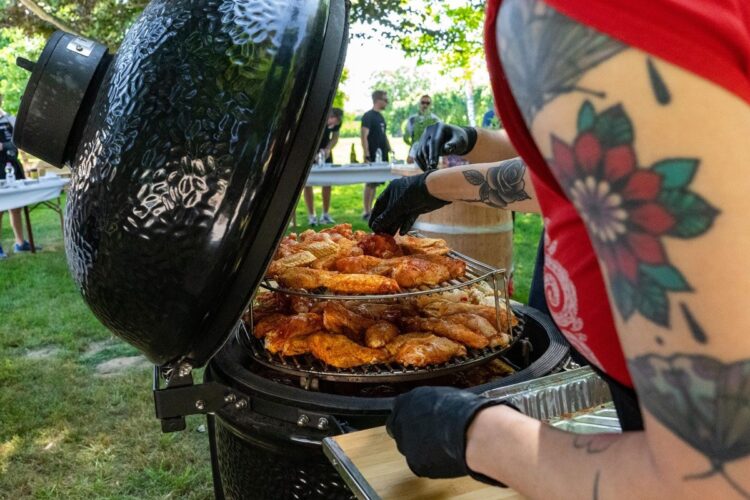Picture this: you’re surrounded by friends and family, the aroma of sizzling meats and vegetables filling the air, and the laughter and chatter of loved ones creating a joyful atmosphere. This is the essence of the Corso barbecue, a culinary tradition that has captured the hearts and taste buds of people across Italy and beyond. In this article, we’ll take you on a journey through the origins, techniques, and cultural significance of this beloved cooking style.
Origins and Evolution
The term Corso barbecue might not immediately ring a bell, but its roots run deep in Italian culture. The word corso translates to course or path, symbolizing the journey of flavors and traditions that this barbecue style embodies. While grilling food over an open flame is a practice as old as civilization itself, the Corso barbecue puts a distinctly Italian spin on it.
Over time, the Corso barbecue has evolved to incorporate quintessential Italian ingredients like olive oil, garlic, rosemary, and balsamic vinegar into the marination and cooking processes. This fusion of classic barbecue techniques with Italian culinary staples has given birth to a flavor profile that is both unique and universally appealing.
Ingredients and Techniques
At the heart of the Corso barbecue are two key elements: top-notch ingredients and masterful cooking techniques. Italians take pride in sourcing the freshest, highest-quality meats, seafood, and vegetables for their barbecues. Whether it’s succulent beef, juicy pork, tender lamb, or crisp vegetables, every ingredient is carefully selected to ensure an unforgettable dining experience.
But it’s not just about what goes on the grill; it’s also about how it’s prepared. The Corso barbecue is all about the art of grilling over high heat, which requires a skilled hand and a keen eye. The goal is to achieve a perfect char on the outside while preserving the natural juiciness and flavor of the ingredients. This technique sets the Corso barbecue apart from other barbecue traditions that rely on low-and-slow smoking methods.
Modern Adaptations
As with any culinary tradition, the Corso barbecue has evolved to keep pace with modern tastes and trends. Today, you’ll find chefs and home cooks alike experimenting with different types of wood and charcoal to infuse their grilled creations with unique smoky flavors. Advances in grilling equipment have also made it easier to control cooking temperatures and times, allowing for even greater precision.
But the modern Corso barbecue isn’t just about what happens on the grill. It has expanded to include a wide array of Italian-inspired side dishes and desserts, from pasta salads and grilled pizzas to grilled fruit with creamy gelato. These contemporary twists ensure that the Corso barbecue remains a vibrant and relevant tradition in today’s culinary landscape.
Cultural Significance
More than just a cooking method, the Corso barbecue is a celebration of the Italian way of life. It embodies the concept of la dolce vita, or the sweet life, which is all about savoring simple pleasures in the company of loved ones. In Italy and beyond, Corso barbecues serve as the centerpiece of gatherings, bringing people together to share in the joy of cooking, eating, and creating memories.
This communal aspect, combined with the emphasis on fresh, quality ingredients, reflects the values at the core of Italian culture. It’s a testament to the power of food to bring people together and create a sense of belonging and connection.
From its humble beginnings to its modern-day adaptations, the Corso barbecue has become a beloved culinary tradition that continues to captivate food lovers around the world. Whether you’re in the rolling hills of Tuscany or firing up the grill in your own backyard, the Corso barbecue invites you to embrace the simple pleasures of good food, good company, and the sweet life. So gather your friends and family, fire up the grill, and savor the flavors and traditions of this timeless culinary art.

